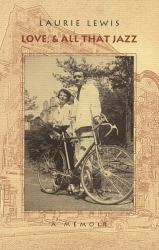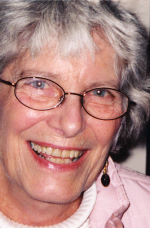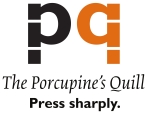
In Love, and all that jazz, Laurie Lewis again shines the clear light of memory on a time of glorious beginnings and hard consequences.
About the Book
In Love, and all that jazz, Laurie Lewis again shines the clear light of memory on a time of glorious beginnings and hard consequences. At the end of her previous memoir, Little Comrades, it’s the year 1952 and the young Laurie is newly married in New York City. But everything is about to change.
Laurie jumps into a wonderfully happy new life with the brilliant, Manhattan-cool, and dangerously charming Gary Lewis. Gary’s idealism and longing for poetry in art, life and love are inseparable from his passionate attachment to the jazz scene. It is the time of Miles Davis, Thelonious Monk and Zoot Sims, among others. Gary’s days and nights become a sleepless, drug-and-alcohol-fuelled, nonstop celebration. Laurie is soon forced to run, escaping back to Canada with her child.
Laurie, now a single mother and creating a new life for herself in publishing, discovers the freedom and peace of mind that self-reliance can bring. Love, and all that jazz, can bring defeat. A declaration of independence, on the other hand, can build an exhilarating new existence. It may mean that love can persevere.
Read an Excerpt
From "Miles Ahead"
When Blossom Dearie came back from France in 1956 or ’57 she played at a ratty little club in New York in the East Fifties. Gary and I went to hear her one night, with Bill Brown. It was just a small place, banquettes in cracked red leatherette, Contact paper on the table tops. Probably not more than ten tables. The waiters all unemployed actors, I think. Certainly not professional waiters. The bar over on the right, mirrors, bottles. Blossom at the piano in the middle of the room on a tiny stage, a couple of guys for backup.
Who played with her? I have no memory of that, only of her. There she was at the piano, a bitty-little person with curly blonde hair and big horn-rimmed glasses, that tiny voice just floating out into our hearts, tender, funny. Funny! She sang ‘I’m always true to you, darling, in my fashion’ with that little-girl sexy sly style of hers. Broke us up. Whitney Balliett, the New Yorker jazz critic, said she had such a tiny voice, ‘without a microphone it wouldn’t reach the second floor of a doll’s house.’ When Blossom played there was absolute silence. Nobody moved (nobody even smoked in the club when she was singing!). What was it about her? There was something so pure and direct about her voice, so subtle in its tenderness. Her time in France had been very successful, and she brought back with her a couple of specials, of which I remember only ‘Comment allez-vous?’ and the French lyrics to ‘It might as well be spring.’ After that evening sitting at a table with Gary and Bill, listening to Blossom, with her enchanting, smart, sassy way with a song, her simplicity, I was a fan forever.
Only a month or so later, somewhere in the same general area of Manhattan, there was a party at a penthouse between Madison and Lexington. We were all outside on the big deck. One of the good New York parties, before the wrecking began, or before I began to notice it. When things were still good. Looked good, anyway:
Roscoe Brown’s place. He’s lounging on a chaise, a glass of wine and a plate nearby. BJ – Brownjohn – looks a bit strung out, but everyone else looks bright, clear-eyed, happy. Larry Storch has taken off his shirt and shoes and is sitting on a metal beach chair in the middle of a kid’s wading pool, a bottle of wine at hand staying cool in the water. He paddles out of the pool swinging the bottle and comes to the head of the chaise, ready to refill Roscoe’s glass. As Roscoe turns his head the shining brown bald spot reveals itself, in crisp black and white, to Gary’s camera. His old Rollei, probably.
It’s a summer afternoon. The sun is flat from the west, hitting the side of all the faces. Probably about four o’clock, maybe five.
The year is 1957, a detail I easily calculate by looking at my daughter Amanda – two and a half years old that summer. She is tipping up a juice glass and drinking as she walks past Brownjohn on her way to Miles. BJ is smiling into her face now, beaming at her. His wife, Donna, is newly pregnant and he has developed a tender love of young children. BJ is a graphic designer in a city full of talent. He is designing the Pepsi-Cola magazine for Gary, and is also doing advertising for I. Magnin, a fine clothing store, using drawings of shoes done by Andy Warhol, a talented and relatively unknown illustrator. I remember one of the shoe drawings push-pinned onto a wall at BJ’s apartment a year or so later, after their baby, Eliza, was born, Eliza Brownjohn.
Miles has both hands on Amanda’s waist as she moves toward him. He is sitting on the tile floor, his back against the brick wall that surrounds the big balcony. He has the stub of a cigarette in his mouth. There are a few big leafy plants nearby, unidentifiable. In the next shot Amanda is sitting in his lap and he has her empty glass in his hand. Amanda is looking at the glass, paying attention to what’s going on. I am leaning over them, Miles and I having a few words. His head is tilted up toward my face. But all three of us seem focused on the empty glass. I may have offered to refill it. I may have offered to get a drink for Miles. Whatever is going on, it is clear that some action is being initiated, and that we are all comfortable together.
Amanda is wearing a dress of dimity or some such sprightly old-fashioned fabric. White with tiny blue flowers. Even looking at the black-and-white photos I know those flowers are blue. I made that dress for her – over fifty years ago. I’m wearing a shirtwaist dress in a gauzy fabric, something called voile. The colour is ivory, and it’s from Lord & Taylor, my favourite clothing store. As I lean forward, the necklace that Gary’s family gave me when we were married swings out into the warm air, the pearls gleaming. My hair is up in a loose chignon, a bit raggedy but sedate and classy. My left earlobe facing the camera shows a small pearl earring, the pair a present from Gary’s father that Christmas before Amanda was born. I have about me the calm and classic kind of look that I liked, that Gary liked. I was happy.
The thing that strikes me is how light and innocent it all was, or seemed. Lovely, artsy New York in the mid-fifties. These people are writers, photographers, musicians, actors, enjoying the summer afternoon with some wine and a bit of food. There was in New York at the time a tender combination of discretion and paranoia. People were toking up in the bathroom, not openly. Four or five people crowded together in the tiny bathroom. Laughing. Inhaling. (‘Conspiring’: breathing together.)
Praise for Love, and all that jazz
‘You can look at this story several ways. In one way it is about a marriage between a husband who is a drug addict and a wife whose addiction is the love of her husband. I, however, prefer not to judge or analyze any of the behavior, but to let all labels fall by the wayside and look at the book as a real love story. It is about a woman who despite all the awful and unloving things her husband did, she never, over decades, gave up on him. They were always the love of one another’s life. That is a rare find these days. The writing is subtle and understated, yet the author manages to pack in an enormous amount of feeling.’
—Catherine Gildiner, author of Too Close to the Falls
‘Laurie Lewis writes with sophistication and simplicity about her precarious and abundant life. By the end of her vivid account, the sadness that flows from her innocence and experience is oddly beautiful.’
—Elizabeth Hay, author of Late Nights on Air and Alone in the Classroom
‘Laurie Lewis’s follow-up memoir deftly exposes the pill-popping, booze-swilling underbelly of Madmen-era New York and celebrates the determination of a young single mother to make a life for herself and her child.’
—Sheree-Lee Olson, author of Sailor Girl
‘Love, lovers, jazz and dope, the wild gaiety, glamour and danger of New York’s 1950s bohemia – Love, and all that jazz is an amazing tale of a gutsy and gorgeous Canadian prairie girl with resilience born of a childhood in a Communist family constantly on the run. She was an independent woman when the phrase was still an oxymoron. Laurie Lewis tells her intimate story with wit, panache and touching honesty.’
—Michele Landsberg, feminist author of Writing the Revolution, activist and former Toronto Star columnist
About the Author

Laurie Lewis is a Fellow of the Graphic Designers of Canada and is Editor Emeritus of Vista, the publication of the Seniors Association in Kingston, Ontario, and director of Artful Codger Press.
Laurie began her career in publishing with Doubleday in New York in 1961. She returned to Canada in 1963 to join University of Toronto Press, where she worked in production and design of UTP publications, becoming Head of Design at U of T Press. During her thirty years in publishing, she also taught book design in Guyana, the Philippines and at Ryerson University in Toronto. She moved to Kingston, Ontario in 1991, where she founded Artful Codger Press.
Her written work has been featured on CBC and has been published around and about, including Contemporary Verse 2, Queen’s Feminist Review and Kingston Poets’ Gallery.
A chapter from an early draft of her first book Little Comrades was shortlisted for the 2007 CBC Literary Awards in Creative Non-Fiction.
You Might Also Like
Buy in Print
To get this book in print, order from your favourite indie bookseller, or
buy online from our distributor, UTP »
